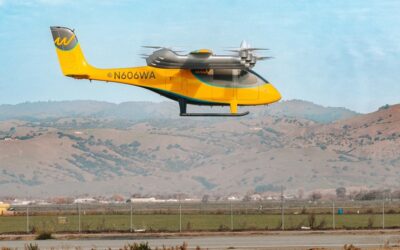
Systemwide first-quarter revenue per available room at Wyndham Hotels & Resorts properties held steady year over year after U.S. infrastructure spending slowed when President Trump froze some funding disbursements upon his return to office.
Infrastructure-related spending comprises the vast majority of Wyndham’s business travel volume. Infrastructure-related travel bookings made up 22 percent of Wyndham’s 2024 gross room revenue, according to a presentation for investors, with “logistics and other” adding another 6 percent and corporate transient accounting for 2 percent.
Donald Trump after his Jan. 20 inauguration as president froze disbursements for some infrastructure projects funded by the Infrastructure Investment and Jobs Act, the $1.2 trillion spending bill passed in 2021. Though a federal judge this month ordered the administration to resume disbursements, the move caused “a bit of a slowdown in the first quarter versus the fourth quarter, with the halting of disbursements of infrastructure funds in January,” Wyndham CEO Geoff Ballotti said Thursday during the company’s quarterly earnings call.
Ballotti noted “IIJA allocations are gradually resuming,” and suggested both private onshoring and public infrastructure spending were on the rise, but said he and several other hotel company and airline CEOs recently met with Transportation Secretary Sean Duffy to discuss the issue.
“The assurance that the administration’s main focus is all about getting the balance of the allocations out, but more importantly as Secretary Duffy said, the dollar is actually spent,” Ballotti said. “The administration wants faster spending on highway and bridge construction—big beautiful highways, big beautiful bridges. There is just too much economic growth. There’s too much job creation. There’s too much economic stimulus to boost GDP for this, as Secretary Duffy put it to us, not to happen in terms of making the transportation infrastructure stronger.”
Overall demand at Wyndham was strong in January but softened in February and dropped further in March “as consumer sentiment weakened,” Ballotti said. RevPAR in March dropped 2.9 percent year over year on a 2.1 percent drop in occupancy and a 0.9 percent decline in average daily rate, according to an investor presentation, and April RevPAR also was down about 3 percent, he said.
Only about 3 percent of Wyndham’s bookings are for inbound international U.S. travel, Ballotti said, and less than 2 percent are from Canada.
Wyndham Q1 Metrics
Wyndham’s first-quarter systemwide RevPAR held about steady year over year at $36.13; Wyndham noted that at constant currency, global RevPAR increased 2 percent. U.S. RevPAR increased 2 percent to $42.37.
First-quarter net revenue increased 4 percent year over year to $316 million. Net income was $61 million, up from $16 million in the first quarter of 2024.
Wyndham offered a new projection for full-year 2025 RevPAR for a range from a 2 percent decline from 2024 levels to a 1 percent increase. Last quarter, Wyndham projected systemwide 2025 RevPAR to increase 2 percent to 3 percent year over year on a constant-currency basis.
“The high end of this range assumes the remaining nine months of the year performed largely in line with our original outlook, essentially implying a swift resolution to the current global trade tensions and a corresponding improvement in consumer sentiment,” Wyndham CFO and head of strategy Michele Allen said on Thursday’s call. “The lower end of the range reflects RevPAR performance more consistent with the trends we saw in March and April.”
Wyndham at the end of the first quarter had about 907,200 rooms in its system globally, up about 4 percent year over year, with total U.S. rooms up about 1 percent to 502,600.
Wyndham’s development pipeline at the end of the first quarter included about 2,140 hotels and 254,000 rooms, the latter figure up 5 percent year over year.
RELATED: Wyndham Q4 performance
Recent Posts
- Wisk Aero completes first flight of gen. 6 autonomous eVTOL in California
- Douglas DC-3 90th Anniversary Broadcast Series Brings Global Community Together to Celebrate a Flying Legend
- Bombardier to send 6 Global 6500 to Canadian Air Force
- Daher Kodiak 900 aircraft receives Brazilian airworthiness certification
- Jim Richmond Backcountry Aviation Foundation announces Mustang flight as raffle prize







Recent Comments